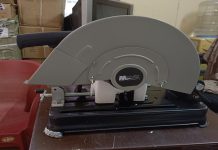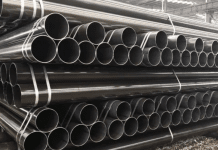A cold plate is an ideal solution for the high-performance thermal management of electrical and electronic equipment. They combine high thermal conductivity and compact design to reduce power consumption and increase performance. Have a number of different cold plate applications, including the design and fabrication of a complete cooling system. This article will cover some of the most common applications and their advantages.
Application of cold plate
One of the most common applications for cold plates is the cooling of motors and automation controls. Other applications for cold plates include air-conditioning units, boilers, dryers, and machine tools. This thermal testing instrument can be used to optimize the performance of cold plates.
Another application for cold plates is the cooling of high-powered devices such as IGBTs. The thermal performance of a liquid-cooling system can reduce junction temperatures. For optimum device performance, lowering junction temperatures is essential to avoiding switching losses. To achieve this, cold plates use internal channels or fin structures to transfer heat.
Machined cold plates are a better option for industrial applications
These plates consist of a machined plate with flow passages. You can buy a machined cold plate with a machined or flat cover. These cold plate electronics cooling solutions are more expensive than the conventional type, but they are highly efficient. They can save you money in the long run. They are an excellent alternative to traditional mechanically-cooled radiators. But if you are using one in your home, make sure you test it thoroughly before installing it in your system.
Cold plates are comprised of copper or aluminum plates with 6.35mm outside diameter tubes. The tubes have flattened cross-sections that provide favorable thermal contact with the module’s lid. These tubes are formed to reduce their hydraulic diameter, which allows more convective heat transfer. This also increases pressure drop. The lower the pressure, the better. The lower the temperatures, the better. So, if you’re using a module, use a copper plate.
A cold plate’s outer diameter is 6.35mm. The resulting temperature difference between the plates is only slightly higher than the temperature difference between the plates. A copper cold plate is best suited for high heat loads. The cold plate design reduces the pressure drop and makes it ideal for a variety of electronic devices. This is why it is a popular choice for computer components. This system is an excellent choice for thermal management. So, it’s not just about the size; it also has a low-temperature coefficient and lower energy consumption.
Conclusion
Cold plates have many benefits. They are often used to cool power devices and electronics in motors. The technology is also used in large-scale cooling systems such as air-conditioning units, boilers, dryers, and machine tools. The cold plates have many applications and can be customized for different requirements. The key is to find the right one for your needs. This is not an easy task. It is important to understand the technology that goes into the cold plate to get maximum performance.











